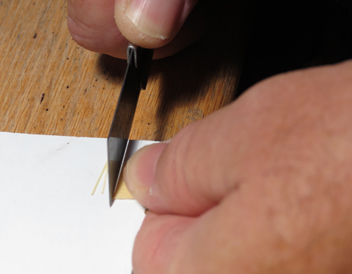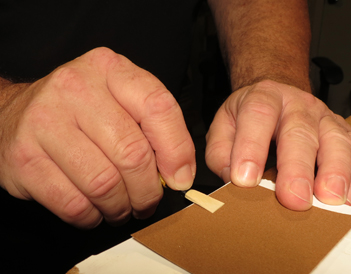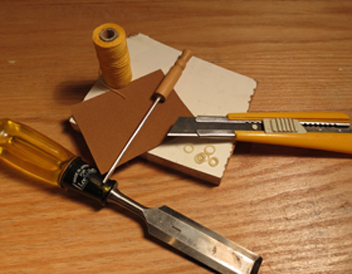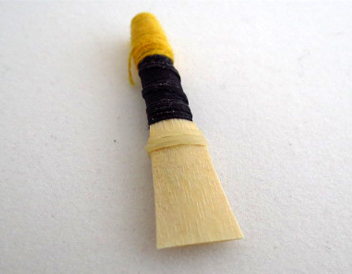Maintenance
- Blowing new reeds in
- Dealing with a double toning F
- Maintenance and Reed Manipulation
- The rubber band technique
Sound Supreme Reeds have been manufactured using the finest aged cane and have been individually tested prior to shipping. There are a few things that you should be made aware of regarding the blowing-in process of a new reed.
First of all, please remember that the reeds more than likely have become very dry during shipping which means that squeezing the reed with no moisture could result in the reed splitting.
The Blowing-in Process
When putting a reed in for the first time, make sure it is fitting nice and snug in the reed seat of the chanter. Do not apply any saliva to the reed. ALL you want to do is blow some air through the reed. Sound Supreme reeds do not require much moisture as a result of the cane being used.
During the blowing-in process it is very common for the reed to open up and get harder. This is also common when you put down your pipes and take a break. When this happens, gently squeeze the cane portion of the reed between your thumb and index finger just above the thickest part of the reed (also known as the sound box). Squeeze for about 5 seconds and then release. The cane will spring back open but it will be easier and sharper in pitch. Continue to do this as required but please remember: the less that you touch your reed, the longer it should last.
If you find that the reed is flat in pitch it is neccessary to sink the reed further into the reed seat of the chanter. This is done of course by removing some of the hemp from the reed. Only remove a little at a time trying the reed until you are happy with the pitch. If you find that the reed is sharp in pitch, do the exact opposite and add hemp to the reed until you are happy with the sound.
As your reed gets blown in and more comfortable you may have to make minor adjustments to the reed. In most cases this is usually lifting the reed a touch by adding hemp.
I have designed these reeds with the intent of sounding bright and nicely pitched without having to sink the reed too deep into the reed seat of the chanter. I have found through experience that over-sinking or driving a reed into the chanter's reed seat causes problems such as an unbalanced chanter, double toning "F" and a hard reed with a light muffled sound. The one thing that a piper hates is a hard reed with no volume.
Due to the numerous chanters that have been manufactured over the many years it is possible that certain procedures may have to be done to suit a reed to your chanter. If you feel that you are having a particular problem and need advice on what to do please contact me by email, phone or by letter and I will gladly explain how to make an adjustment to your reed.
Fit the reed to the chanter and not the chanter to the reed.
Dealing with a Double Toning "F"
As mentioned in the 'blowing in process section,' at times it's possible a new or used reed may develop a double toning 'F'. This can be easily fixed. I have seen so many discarding reeds as either done or no good to begin with. When, with some minor manipulation can be a reed that will last you for more months to come or be the best reed you've ever had. Here are some tips:
- At times, all that's required is a pinch for the new reed that has opened up or a rubber band (see rubber band technique).
- Chopping back the reed a touch. This requires a very sharp knife or chissel, a smooth, flat and hard surface and good lighting. Lay the reed on your surface and chop the blades back just a wee bit at a time. Test until fixed. You may at this point need to sand the reed a touch to ease up the strength.
Also with shortening the overall length of the reed the pitch will have sharpened up. You may have to add a touch of hemp to flatten the pitch.

- With older blown in reeds that may develop a double toning 'F', use the same technique . If the reed has become discoloured, lightly sand or scrape the reed to remove any matter from the cane. Even if an older reed has no double toning 'F', but has become easy to blow
and has lost volume, chopping the blades back can bring life back to the reed.

Maintenance and Reed Manipulation

The following are items that are useful for reed manipulation and maintaining a top quality sounding reed.
- Sharp Knife
- A smooth, flat, hard chopping surface
- Reed poker
- Sand paper
- Elastic bands
Please note: Moisture control systems can play an important part in maintaining the quality and life span of a reed. There are so many on the market which comes down to personal preference.
The one thing I would highly recommend is to direct the airflow to the back of the bag by using a tube from the blowpipe stock going towards the back of the bag. Do this especially if you notice moisture beading around the read seat area or a dampened reed.
Rubber Band Technique

Many solo pipers and band pipers use a rubber band at times to either help with the blowing-in process or help bring up the pitch of a hard flattish reed. Here are a few tips:
- Use dental elastics only. I have found that 1/4" heavy to be the best.
- 4 wraps of the elastic should apply enough pressure to the blades.
- Wrapping the elastic from the hemp end of the reed and move up towards the cane will avoid possible chipping of the corners of the blades.
- Move elastic up until you are happy with both the strength and the pitch. You may need to flatten off the pitch a touch by adding hemp once you are happy with the strength.
- Once finished playing, it is very important to move the elastic down to the black thread line. Leaving the elastic on the tapered part of the cane can cause the reed to collapse.




 Email us
Email us